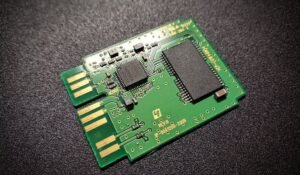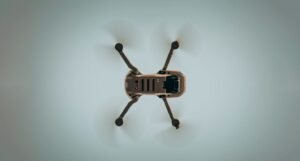Machine Learning History
Machine learning has become a popular field in recent years, with applications across various industries. But where did it all begin? In this article, we will explore the history of machine learning, from its early beginnings to the advancements we see today.
Key Takeaways:
- Machine learning has a rich history, dating back to the 1940s.
- Arthur Samuel coined the term “machine learning” in 1959.
- The 1960s and 1970s saw significant advancements in neural networks.
- Machine learning gained popularity in the early 2000s with the availability of large datasets and computational power.
- Today, machine learning is used in a wide range of applications, including self-driving cars and personalized recommendations.
In the 1940s and 1950s, scientists began exploring the concept of artificial intelligence (AI). They aimed to develop machines that could mimic human intelligence and perform tasks independently. One of the early pioneers in this field was Arthur Samuel, who developed a program to play checkers. *This program was the first example of a machine learning algorithm that improved its performance over time.* Samuel’s work laid the foundation for future developments in machine learning.
During the 1960s and 1970s, researchers made significant advancements in neural networks. Neural networks are computational models inspired by the human brain, consisting of interconnected nodes called artificial neurons. These networks can learn from data and make predictions or decisions. However, due to limited computational resources, progress in machine learning during this period was slow.
The Rise of Machine Learning
The early 2000s marked a turning point for machine learning. With the exponential growth of data and advancements in computing power, researchers began to develop more sophisticated algorithms and models. Additionally, the availability of large datasets provided the necessary fuel for training advanced machine learning models, **such as deep learning networks.** As a result, machine learning gained popularity and started to be implemented in various domains.
One of the breakthrough moments in machine learning history was the development of the Support Vector Machine (SVM) algorithm in the 1990s. SVMs are supervised learning models used for classification and regression analysis. They discern decision boundaries in the form of hyperplanes, allowing them to effectively separate data points into different classes. *This algorithm revolutionized classification tasks and still finds applications in image and text classification today.*
Key Milestones in Machine Learning History
| Year | Milestone |
|---|---|
| 1943 | Warren McCulloch and Walter Pitts introduce the concept of artificial neurons. |
| 1956 | John McCarthy, Marvin Minsky, Nathaniel Rochester, and Claude Shannon organize the Dartmouth Conference, marking the birth of AI as a field. |
| 1959 | Arthur Samuel introduces the term “machine learning.” |
As machine learning progressed, scientists introduced various algorithms and techniques. Decision trees, which are simple yet powerful models, became popular in the 1970s. They comprise a series of tree-like structures that make decisions based on input features. Decision trees are easy to interpret and have been widely used in fields like finance and medicine.
In the 1980s and 1990s, the field of machine learning witnessed further advancements with the introduction of techniques such as random forests, k-nearest neighbors (KNN), and ensemble learning. *These algorithms paved the way for more accurate and robust machine learning models.*
Applications of Machine Learning
| Industry | Application |
|---|---|
| Healthcare | Diagnosing diseases and predicting patient outcomes. |
| Finance | Financial fraud detection and algorithmic trading. |
| Transportation | Self-driving cars and traffic optimization. |
Today, machine learning is used in a wide range of applications. In healthcare, machine learning algorithms can analyze medical records and diagnostic images to help diagnose diseases and predict patient outcomes. In finance, algorithms can detect fraudulent transactions and make automated trading decisions. Machine learning is also transforming the transportation industry by powering self-driving cars and optimizing traffic flows.
Machine learning has come a long way since its inception. With ongoing advancements and the increasing availability of data, we can expect even more exciting developments in the future. As technology continues to evolve, machine learning will likely play a fundamental role in shaping the world we live in.

Machine Learning History
Common Misconceptions
One common misconception about machine learning history is that it is a new field. While the term “machine learning” was coined in 1959, the concept of machines being able to learn and improve from experience has been around for much longer. In fact, the roots of machine learning can be traced back to the early development of artificial intelligence in the 1940s.
- Machine learning has a history spanning back to the 1940s.
- The term “machine learning” was coined in 1959.
- Machine learning has evolved significantly since its inception.
Another misconception is that machine learning is only about computers learning from data. While this is a major aspect of machine learning, it is not the only one. Machine learning also encompasses various techniques and algorithms that enable computers to make predictions or decisions without explicitly being programmed to do so. These techniques include reinforcement learning, unsupervised learning, and deep learning.
- Machine learning involves techniques beyond just learning from data.
- Reinforcement learning is a type of machine learning technique.
- Deep learning is a subfield of machine learning.
Many people believe that machine learning is a magical black box that can solve any problem. However, this is far from the truth. Machine learning algorithms are only as good as the data they are trained on and can only make predictions or decisions based on the patterns they have learned. If the data is biased or incomplete, the machine learning model may produce inaccurate or biased results.
- Machine learning requires high-quality and representative data.
- Data quality directly impacts the performance of machine learning models.
- Biased data can lead to biased results in machine learning.
Another misconception is that machine learning will replace humans in various fields. While machine learning has the potential to automate certain tasks and improve efficiency, it is not designed to replace humans entirely. Machine learning algorithms still require human supervision, interpretation, and decision-making. Furthermore, there are many tasks that involve human creativity, empathy, and judgment, which machines cannot replicate.
- Machine learning is not intended to replace human involvement entirely.
- Human supervision and decision-making are still crucial in machine learning.
- Tasks requiring creativity and empathy cannot be fully automated by machine learning.
Lastly, there is a misconception that machine learning is only accessible to experts or those with extensive programming knowledge. While there is certainly a need for machine learning experts, there are also user-friendly tools and platforms available that allow individuals with less programming expertise to utilize machine learning techniques. These tools enable people from various backgrounds and domains to leverage the power of machine learning for their specific needs.
- Machine learning tools and platforms are available for non-experts.
- Programming knowledge is not always a requirement to use machine learning.
- Machine learning can be applied across various domains and backgrounds.

The First Steps in Machine Learning History: Automatons
In the early days of machine learning, automatons were the start of it all. These mechanical devices were designed to imitate human behavior and perform specific tasks. The first known automaton, a mechanical bird, was created by the Greek mathematician Heron of Alexandria in the 1st century AD. Let’s take a look at some fascinating automatons from history:
| Name | Year | Creator | Function |
|---|---|---|---|
| Jaquet-Droz’s Writer | 1774 | Pierre Jaquet-Droz | Could write custom text autonomously |
| Maillardet’s Automaton | 1800 | Henri Maillardet | Could draw or write poems with a quill pen |
| Vaucanson’s Duck | 1739 | Jacques de Vaucanson | Could flap its wings, eat, and digest food |
The Rise of Neural Networks: Perceptrons
In the late 1950s, perceptrons became the foundation of neural network research. Developed by Frank Rosenblatt, these artificial neurons could process inputs and produce a binary output. The perceptron model laid essential groundwork for the future growth of machine learning. Let’s explore notable perceptron achievements:
| Name | Year | Creator | Contribution |
|---|---|---|---|
| Mark I Perceptron | 1957 | Frank Rosenblatt | Could learn simple two-dimensional patterns |
| Madaline | 1959 | Bernard Widrow and Marcian Hoff | First multi-layer perceptron; used for noiseless channel equalization |
| Perceptron Convergence Theorem | 1962 | Marvin Minsky | Proved convergence for single-layer perceptrons |
The Birth of Artificial Intelligence: Lisp
Lisp, the second-oldest high-level programming language, played a vital role in the development of artificial intelligence (AI). Designed for easy manipulation of symbolic expressions, Lisp enabled AI researchers to implement complex algorithms. Here are some significant milestones in the history of Lisp:
| Name | Year | Creator | Contribution |
|---|---|---|---|
| Recursive Functions | 1956 | John McCarthy | Introduced the concept of recursive functions to Lisp |
| MacHack IV | 1969 | David Ahl | First Lisp game, a space-themed hack-and-slash adventure |
| Symbolics | 1980 | Russell Noftsker, Dan Weinreb, and others | Company founded to build Lisp machines for AI research |
The Revolution of Big Data: Hadoop
As machine learning progressed, managing and processing enormous data volumes became a challenge. To tackle this problem, Apache Hadoop was introduced as an open-source framework that allowed reliable, distributed processing of big data. Let’s examine some key developments in the history of Hadoop:
| Name | Year | Creator | Contribution |
|---|---|---|---|
| Google File System Paper | 2003 | Sanjay Ghemawat, Howard Gobioff, and Shun-Tak Leung | Introduced the idea of a distributed file system for large-scale computing |
| Hadoop Distributed File System | 2006 | Apache Software Foundation | A distributed file system designed to handle big data |
| Apache Pig | 2007 | Apache Software Foundation | A high-level platform for processing and analyzing large data sets |
The Age of Deep Learning: Convolutional Neural Networks
Convolutional Neural Networks (CNNs) revolutionized machine learning by effectively processing visual data. These deep learning models excel at tasks such as image recognition and computer vision. Let’s explore significant milestones in the development of CNNs:
| Name | Year | Creator | Contribution |
|---|---|---|---|
| LeNet-5 | 1998 | Yann LeCun | First successful implementation of a CNN for digit recognition |
| AlexNet | 2012 | Alex Krizhevsky, Ilya Sutskever, and Geoffrey Hinton | Revolutionized image recognition accuracy on the ImageNet dataset |
| ResNet | 2015 | Kaiming He et al. | Introduced skip connections to enable training of deeper networks |
The Emergence of Reinforcement Learning: DeepMind’s Milestones
Reinforcement Learning (RL) focuses on teaching machines to make decisions based on trial-and-error experiences. DeepMind, an AI research company, has made remarkable progress in RL. Let’s take a look at DeepMind’s significant achievements:
| Name | Year | Creator | Contribution |
|---|---|---|---|
| Atari Game Playing | 2013 | Volodymyr Mnih et al. | Deep RL agent learns to play Atari games at a superhuman level |
| AlphaGo | 2016 | DeepMind’s team | A deep RL agent beats world champion Go players |
| AlphaZero | 2017 | DeepMind’s team | A deep RL agent masters Go, chess, and shogi without prior human knowledge |
Machine Learning in Industry: Reinventing Businesses
Machine learning has revolutionized various industries, driving innovation, and transforming businesses. Here are some real-world examples of machine learning applications:
| Industry | Use Case | Benefit |
|---|---|---|
| Healthcare | Diagnosing diseases from medical images | Faster and more accurate diagnoses |
| Retail | Personalized product recommendations | Increased sales and customer satisfaction |
| Finance | Fraud detection in credit card transactions | Reduced financial loss for both businesses and consumers |
Machine Learning’s Social Impact: Ethical Considerations
As machine learning advances, ethical considerations must be addressed to ensure responsible and fair use of AI technologies. Here are some ethical concerns associated with machine learning:
| Concern | Description |
|---|---|
| Bias in Algorithms | Machine learning algorithms can reflect and amplify existing societal biases |
| Privacy and Data Security | The collection and use of personal data raise concerns about privacy and data breaches |
| Automation and Job Displacement | Machine learning’s impact on employment and potential job displacement |
Machine Learning’s Future: Exciting Possibilities
Machine learning continues to evolve rapidly, opening up exciting possibilities for the future. Here are some areas where machine learning may have significant impacts:
| Area | Potential Impact |
|---|---|
| Autonomous Vehicles | Enhanced safety and efficiency in transportation |
| Healthcare | Improved disease diagnostics and personalized treatment plans |
| Robotics | Advancements in autonomous robots for various applications |
Machine learning has come a long way since its early stages, from the fascinating automaton creations to today’s advanced neural networks and deep learning models. Alongside the tremendous progress, challenges related to ethics and privacy also demand attention. Exciting possibilities lie ahead as machine learning continues to reshape industries and augment human capabilities, bringing us closer to a future of immense potential.
Frequently Asked Questions
What is the history of machine learning?
Machine learning had its roots in the early days of computing when researchers began exploring the concept of artificial intelligence. The field has evolved over the years, with significant milestones including the development of neural networks, the emergence of statistical learning theory, and the rise of big data and computational power.
Who are some key figures in the history of machine learning?
Several notable figures have contributed to the development of machine learning. Some key individuals include Arthur Samuel, who coined the term “machine learning” in the 1950s, John McCarthy, who developed the concept of artificial intelligence and introduced the Dartmouth Conference in 1956, and Geoffrey Hinton, a pioneer in neural networks and deep learning.
What are the major milestones in machine learning history?
Some major milestones in machine learning history include the development of the perceptron algorithm by Frank Rosenblatt in 1957, the introduction of the backpropagation algorithm by Paul Werbos in 1974, the success of IBM’s Deep Blue defeating world chess champion Garry Kasparov in 1997, and the breakthroughs in deep learning with the ImageNet competition in 2012.
How has machine learning evolved over time?
Machine learning has greatly evolved over time due to advancements in computing power, availability of vast amounts of data, and improvements in algorithms. Early approaches focused on rule-based systems and symbolic learning, while recent developments have focused on neural networks, deep learning, and the ability to process and analyze massive datasets.
What is the impact of machine learning on various industries?
Machine learning has had a significant impact on various industries. It has revolutionized fields such as healthcare, finance, marketing, and transportation by enabling more accurate predictions, personalized recommendations, fraud detection, and autonomous systems. Machine learning has also played a crucial role in driving technological advancements in areas like computer vision and natural language processing.
What challenges has machine learning faced throughout history?
Machine learning has faced various challenges throughout history. Some key challenges include the “knowledge acquisition bottleneck,” where the process of teaching machines can be time-consuming and require significant resources, the interpretability and explainability of complex models, and the ethical considerations surrounding bias and privacy issues in automated decision-making systems.
What are some future trends in machine learning?
Some future trends in machine learning include the increased adoption of deep learning algorithms, the integration of machine learning with other emerging technologies such as blockchain and Internet of Things (IoT), the development of better techniques for interpretability and explainability, and the continued exploration of ethical implications and regulations surrounding the use of machine learning.
How has machine learning impacted the field of artificial intelligence?
Machine learning has significantly impacted the field of artificial intelligence by providing the means to automatically learn from data and improve performance on specific tasks. It has enabled the development of intelligent systems that can analyze and interpret complex patterns, make accurate predictions, and learn from experience. Machine learning is now considered a fundamental component of AI.
What are the different types of machine learning algorithms?
Machine learning algorithms can be classified into supervised learning, unsupervised learning, and reinforcement learning. Supervised learning involves learning from labeled data to predict or classify new examples. Unsupervised learning aims to discover patterns or structures in unlabeled data. Reinforcement learning deals with agents learning from feedback in dynamic environments to maximize rewards through a trial-and-error approach.
What are some popular applications of machine learning today?
Machine learning is widely used in various sectors. Some popular applications include image and speech recognition, recommendation systems, autonomous vehicles, fraud detection, predictive maintenance in industrial settings, and healthcare diagnostics. Machine learning algorithms are also being employed in natural language processing, sentiment analysis, and chatbots.




